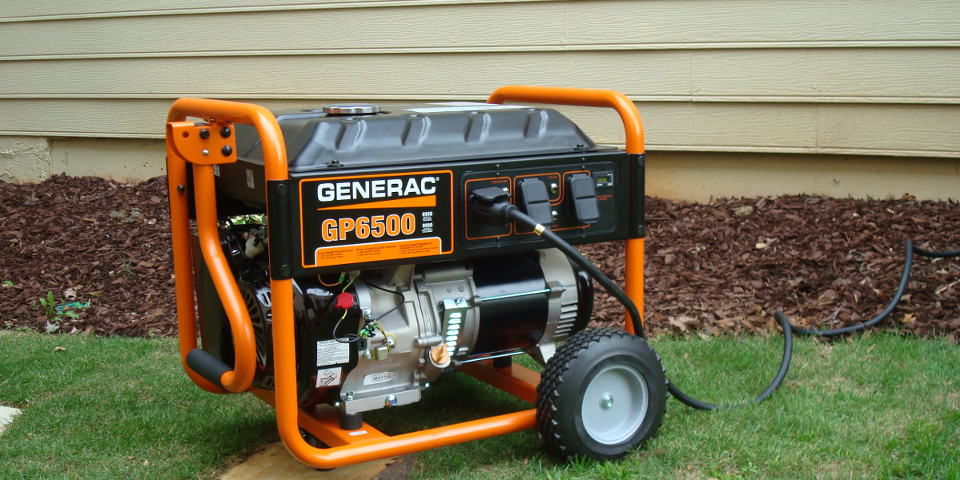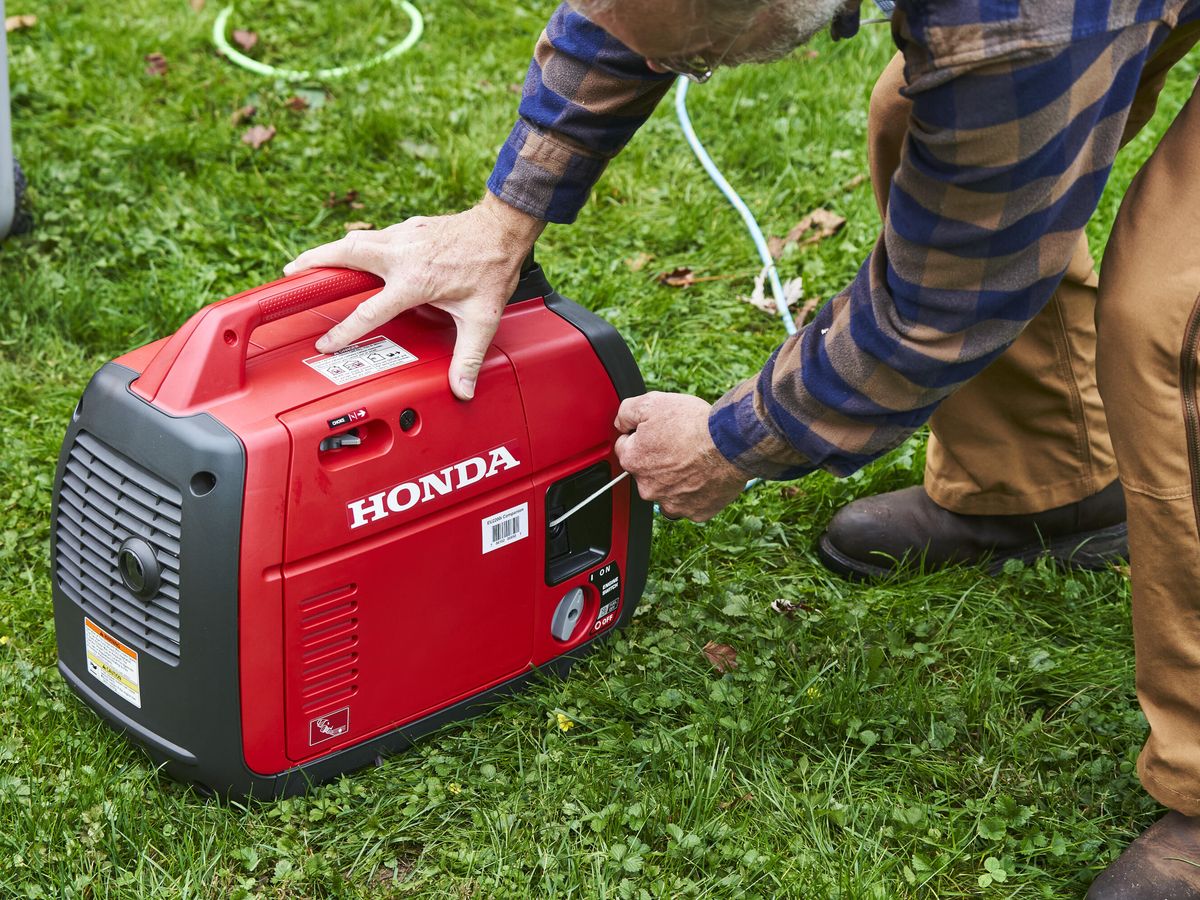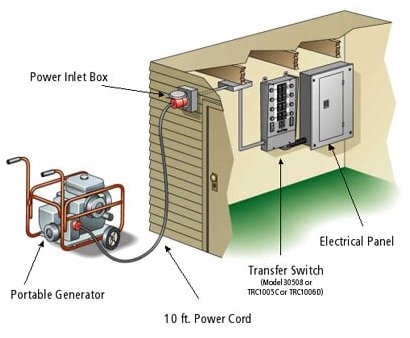How to use a generator | A comprehensive guide
Generators are available in diverse electrical and physical setups to ensure continuous power supply during outages, garanteeing the uninterrupted flow of daily activities and business operations. In the forthcoming sections, we will explore the purpose of generators, their primary components, and how they operate as an auxiliary source of electricity in both residential and industrial settings, showcasing how to use a generator effectively.
How to use a generator safely
Safety is paramount when it comes to operating a generator. In this guide, we’ll explore how to use a generator safely, including essential tips and precautions. Whether you’re facing a power outage or utilizing a generator for specific tasks, understanding these safety measures is crucial to protecting both yourself and your equipment

Step 1: Review the manufacturer’s guidelines
Whether you are using your generator for the first time or it has been idle for an extended period, it is crucial to thoroughly examine all the instructions and safety guidance included in the manufacturer’s documentation. Before attempting to start the generator, invest a few minutes in comprehending the provided information to ensure the safe operation of the equipment. It’s necessary to consider storing the safety information alongside the generator for convenient access during emergencies.
Step 2: Position the generator in an appropriate location

Generators have the potential to generate heat and noise and emit hazardous fumes. Therefore, it is imperative to place the generator outdoors, within a dry setting, maintaining a minimum distance of 3 feet from other objects and 20 feet away from open doors or windows.
Make sure that the generator is placed in an area with proper ventilation. It is essential to ensure the safety of the generator and the people around it, devoid of debris and free from any materials that are flammable or combustible.
Step 3: Inspect the fuel level
Your generator should come equipped with a fuel gauge of some kind. It’s essential to verify that the generator’s fuel tank contains sufficient fuel before initiating the machine. If required, add more of the appropriate power to ensure proper operation.
Step 4: Examine the generator’s oil level
Generators rely on oil to lubricate their moving components. Following the manufacturer’s guidelines for your particular generator model, assess the oil level before initiating the generator. If needed, top up the oil with the specific type recommended by the manufacturer to ensure proper lubrication.
Step 5: Evaluate the generator’s air filter

As part of the combustion process used to generate power, your portable generator draws in air. To maintain air purity, filters trap dirt and debris from intake. Before initiating the generator, it is essential to inspect the filter. If it appears dirty or obstructed, follow the manufacturer’s instructions to clean or replace it to ensure proper functioning.
Step 6: Disable the circuit breaker
Your generator includes a switch that governs its power output. Before starting the generator, ensure this switch is securely set to the ‘OFF’ position for safety.
Step 7: Activate the fuel valve
This mechanism regulates the flow of fuel to the generator’s engine. While the generator relies on energy to operate and generate power, turning on the fuel valve when you are fully prepared to start the generator is essential.
Step 8: Commence the generator
Initiate the machine by employing the ‘START’ switch or key on your generator. It’s advisable to allow the generator to warm up and run for a specific duration, as indicated in your generator’s instructions, before transitioning the circuit breaker to the ‘ON’ position.
Step 9: Connect your devices

Numerous generators can plug electronic devices directly into the generator or use an approved extension cord for this purpose. When selecting an extension cord, ensure it is heavy-duty, designed for outdoor use, and equipped with a grounding pin for safety. You can connect the generator to your home if you possess a transfer plug.
Step 10: Turn off the generator
When the generator’s power is no longer required, or refueling is necessary, it’s crucial to power down the machine. Start by switching the circuit breaker to the ‘OFF’ position. Then, deactivate the generator using its power switch or key. Finally, set the generator’s fuel valve to the ‘OFF’ position.
Step 11: Ensure an ample fuel supply for your requirements

The quantity of fuel you can store may be subject to restrictions imposed by laws, regulations, safety guidelines, and available storage space. Aim to maintain a sufficient fuel reserve to power the generator for the duration you anticipate needing it.
Refer to the manufacturer’s instructions for insights into how long your generator can operate on a single fuel tank. This information can give you an estimate of the fuel to keep in reserve.
Always adhere to the generator manufacturer’s recommendations regarding the type of fuel to use. Using inappropriate energy can pose hazards and invalidate the generator’s warranty.
Standard fuels employed for portable generators typically include gasoline and kerosene.
Step 12: Shut down the generator and allow it to cool before refueling
Although it may seem inconvenient to deactivate your power source, attempting to refuel a hot generator poses significant risks. Turn off the machine and wait for a 15-minute cooling period before refueling. To minimize any inconvenience, consider scheduling generator refueling during off-peak times, such as when your household is asleep.
Step 13: Conduct routine inspections of your generator
Maintaining your generator in optimal working condition is paramount. Given the potential for extended periods of inactivity, it is advisable to schedule periodic inspections at least once a year. During these inspections, ensure that all components are clean and the fuel in the tank is fresh.
Adhere to the manufacturer’s storage instructions. Additionally, consider running the generator briefly, approximately once a month. This practice verifies that all systems function correctly and helps keep the machine’s components adequately lubricated.
Operational Safety: Make a Test Run

To guarantee the proper functioning of your system, it’s imperative to conduct a comprehensive test run immediately after its installation. Avoid waiting for an emergency; perform a thorough test under normal circumstances while you are composed and collected. This practice may reveal several outcomes. It could demonstrate that all systems perform seamlessly on generated power, mirroring their performance with utility power. Conversely, it might show issues. In cases where the test run uncovers problems, there are specific steps to investigate.
- Tripping of GFCI Outlets: This occurrence signals the presence of either a ground fault within the circuit supplied by the generator or the use of an incompatible 2-pole transfer switch. The solution here involves the installation of a 3-pole transfer switch, which should rectify the issue. If this step doesn’t resolve the problem, further investigation is required to locate the ground fault within the electrical system.
- Tripped Circuit Breakers: When circuit breakers trip, it suggests an overload in the system. To address this, you should practice improved power management. For instance, if you’ve calculated the power requirements of your well pump and find that the pump motor demands more power than initially estimated, consider sequencing your power usage. Ensure no other significant electrical loads are active or limit them to minor power consumption. This allows the well pump full access to the generator’s output when refilling the healthy tank. Preventing under-voltage situations, particularly for significant loads like the well pump, is crucial to avoiding potential damage. Electric motors can experience surges of up to three times their rated current during their initial seconds of startup.
- Devices Experiencing Difficulty Operating or Performing Poorly on Generator Power: Multiple factors can contribute to this issue, ranging from a poorly executed transfer switch installation to deficiencies in the generator itself. Inexpensive generators from lesser-known manufacturers may need more electrical output.
For instance, while the generator is supposed to produce a consistent 120 volts, it may fail to do so consistently. This issue becomes even more critical when the generator is undersized, exacerbating its already subpar power quality under normal operating conditions as additional demand is placed on it.
Budget-friendly consumer electronics (such as deeply discounted flat-screen TVs from major retailers) and significant appliances often exhibit inadequate power-filtering capabilities within their DC circuitry. As a result, they can be vulnerable to the substandard power quality produced by generators manufactured by less reputable companies. Using such power sources can cause harm to your appliances or electronics.
Tips for using a generator

Using a Transfer Switch
To safely employ a portable generator as a backup power source for your home, consider using it with a manual transfer switch. This switch, connected via a sturdy genset cord, isolates and selects specific circuits for generator power, preventing overloading, ensuring grid isolation, and avoiding dual power source risks.
GFCI Transfer Switch with a GFCI Generator
National Electrical Code (NEC) requires GFCI-equipped generators to have a compatible transfer switch that disconnects the neutral. Attempting to use a standard 2-pole transfer switch on such generators can trip GFCI outlets, compromising safety and compliance. For non-GFCI generators, a 3-pole or 2-pole transfer switch can be used without issues.
Heavy-Duty Extension Cords (When Necessary)
For budget-conscious setups, powering appliances directly from the generator using heavy-duty extension cords is an option. Ensure the cords can handle the electrical load, are rated for exterior use, and are deployed to prevent damage or hazards. Follow the proper sequence for connecting and disconnecting loads with extension cords to maintain safety.
Conclusions
This comprehensive guide on how to use a generator empowers you with the knowledge and skills necessary to operate these essential power sources safely and effectively. Whether you’re facing power outages, planning outdoor adventures, or working on projects, understanding generator selection, mechanics, and safety measures is crucial. By following the guidance provided here, you can confidently navigate the world of generators, ensuring a reliable power supply while prioritizing safety in every application.
Related Articles